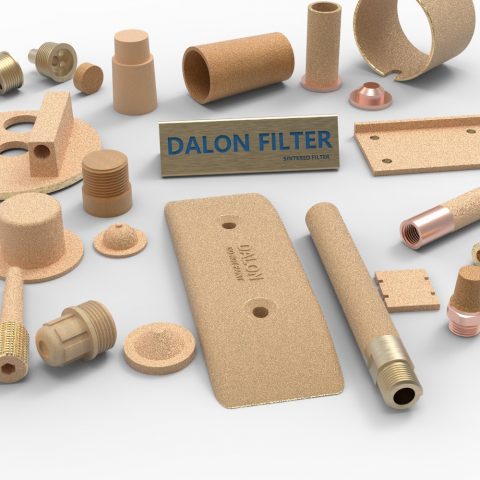Why Use Sintered Bronze Filters?
In industrial operations, precision filtration is more than just a maintenance task—it’s a critical factor in protecting equipment, ensuring process purity, and maintaining compliance with safety or regulatory standards. Among the many filtration materials available, sintered bronze stands out for its durability, structural stability, and reusability.
Sintered bronze filters are manufactured through powder metallurgy, producing a robust, porous structure that captures contaminants across a range of fluids and gases. Their ability to withstand temperature, pressure, and repeated cleaning cycles makes them a versatile choice across sectors—from compressed air systems and hydraulic circuits to food processing lines and medical devices.
This article explores the most common and emerging applications of sintered bronze filters, organized by industry, media type, and specific use cases. Whether you’re an engineer, buyer, or system designer, this guide will help you identify the best ways to deploy sintered bronze filters for optimal results.
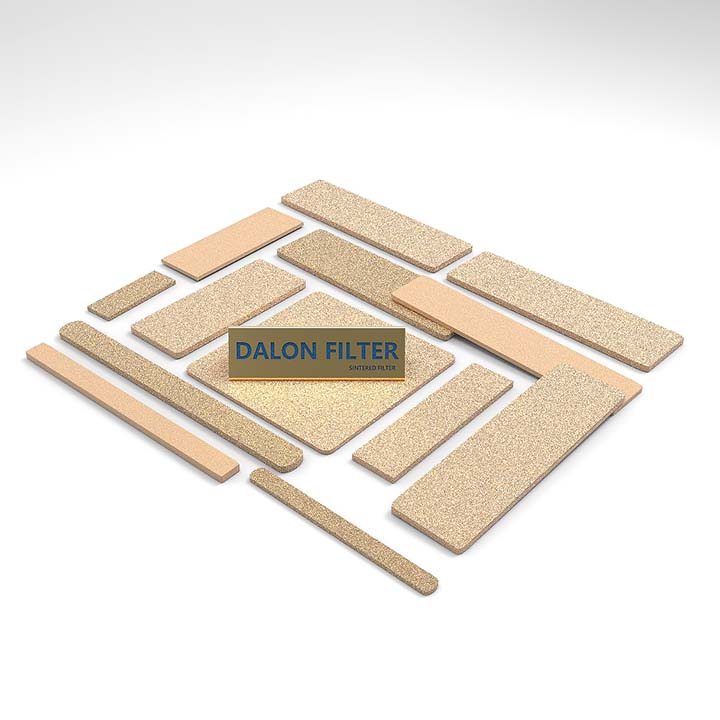
What Makes Sintered Bronze Filters Special?
Key Features:
- Pore Sizes: 5–100 microns (customizable)
- Porosity: Up to 85% (void volume)
- Working Temperature: Up to 250°C (482°F)
- Pressure Rating: 5–10 bar (72–145 psi), depending on geometry
- Reusability: Excellent—100+ cycles with proper maintenance
Material Composition:
- Copper–Tin alloys (CuSn8 or 90/10)
- Optional nickel-plated variants for corrosion-sensitive environments
- Graphite-lubricated grades for dynamic applications
🔧 These filters operate via depth filtration, meaning contaminants are trapped throughout the 3D matrix—not just on the surface—resulting in higher capacity and longer intervals between servicing.
1. Fluid and Gas Filtration Applications
A. Compressed Air & Pneumatics
Function: Remove oil mist, moisture, and fine particles from compressed air
Standards: ISO 8573-1 compliance for purity classes
Applications:
- Pneumatic valves and actuators
- Air compressor discharge lines
- Paint spray systems in automotive factories
Example: A 25µm sintered bronze filter with an anti-static coating ensures clean, oil-free air in a car manufacturing paint booth, preventing blemishes on high-end finishes.
✅ Why bronze? High airflow, minimal ΔP, no fiber shedding.
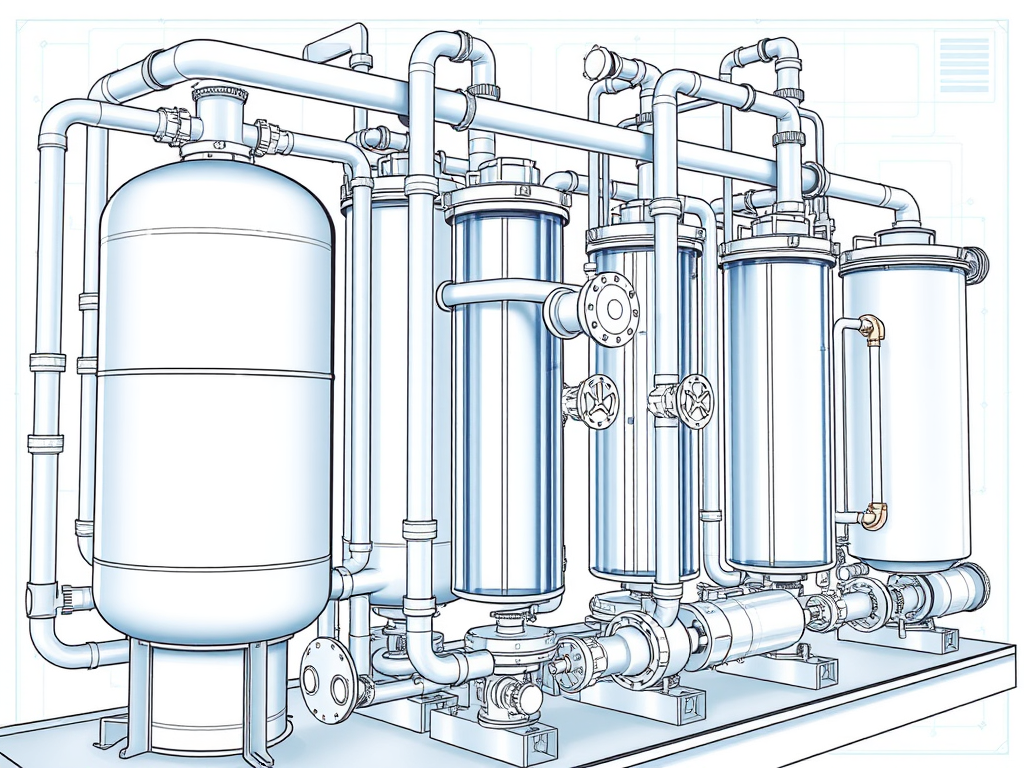
B. Hydraulic & Lubrication Systems
Function: Trap sludge, wear particles, and fine metal shavings
Applications:
- Hydraulic power units (HPUs)
- Industrial gearboxes
- Turbine lubrication systems
- Bearing protection in rotating machinery
Benefit: Bronze’s embedded lubrication and rigidity prevent clogging or collapse under pressure surges.
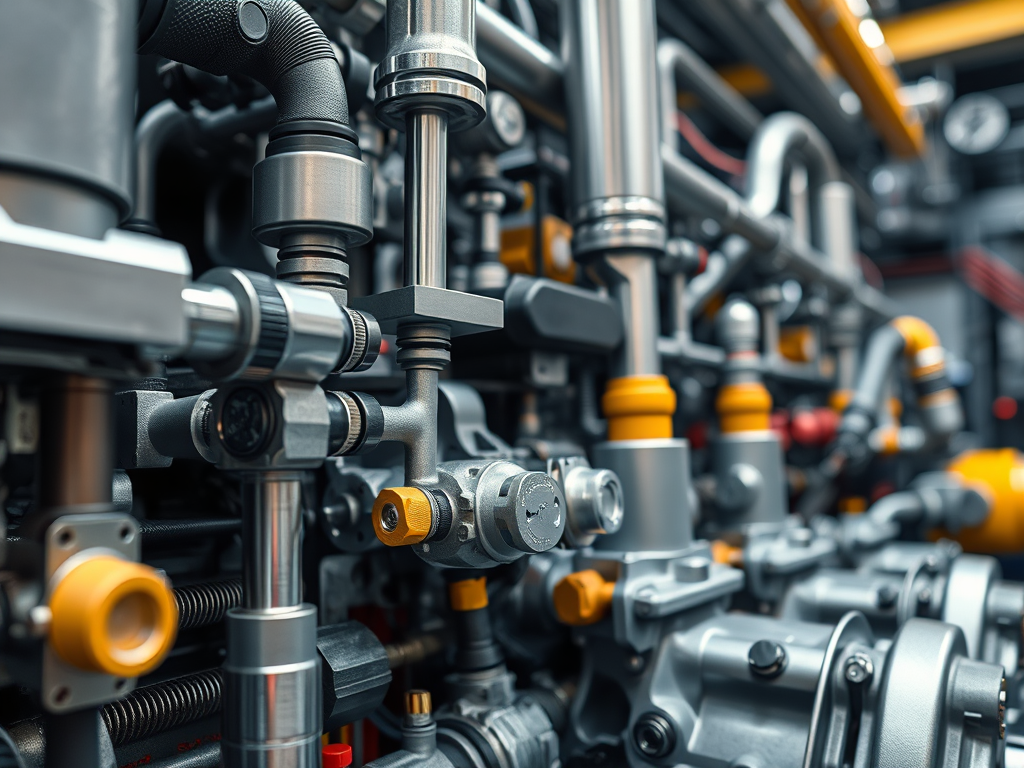
C. Fuel & Oil Filtration
Function: Clean diesel, kerosene, and hydraulic oils
Applications:
- Marine diesel engines
- Aircraft fueling systems
- Fuel injectors
- Generator sets
Sintered bronze elements are ideal for self-lubricating environments, allowing fluids to pass while retaining oil within the matrix to prevent dry start-up conditions.
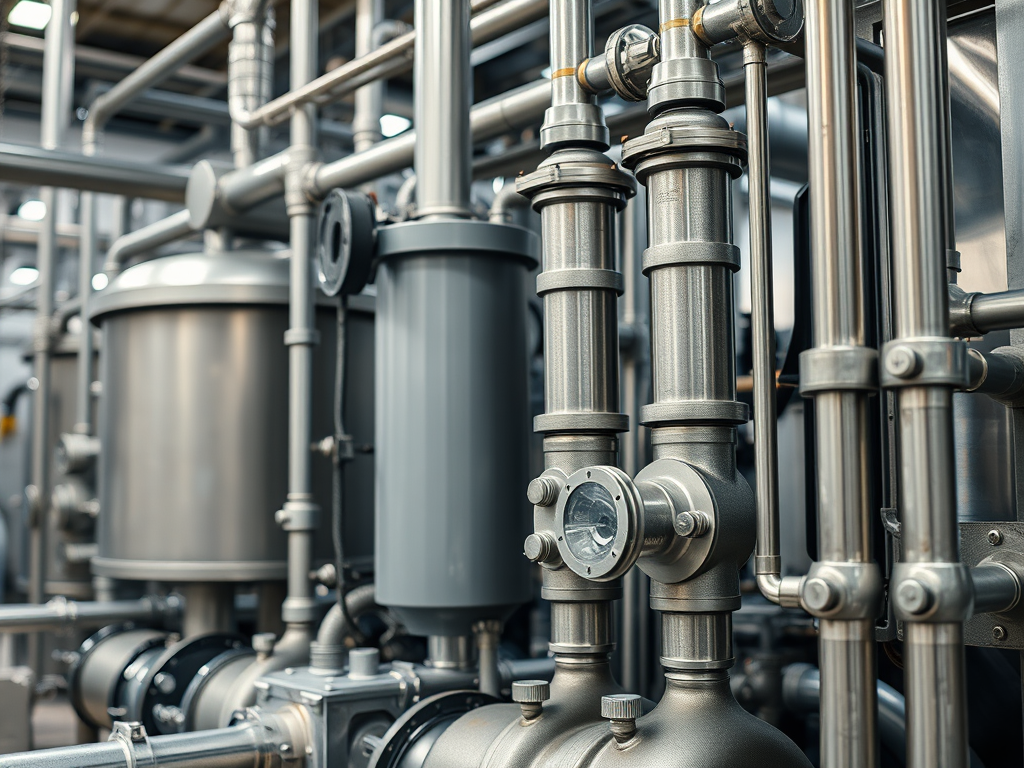
2. Process Industry Applications
A. Chemical & Petrochemical Processing
Function: Filter aggressive gases and liquids under harsh conditions
Applications:
- Catalyst bed retention
- Fluidized bed gas distributors
- Reactor vent filtration
- Solvent purification systems
Filter Enhancements:
- Nickel plating for acid resistance
- Welded or flanged assemblies for high-pressure lines
✅ Especially suited for operations involving chlorinated solvents, hydrocarbon gases, or fine chemical intermediates.
B. Food & Beverage
Function: Sanitary filtration of process gases and liquids
Applications:
- CO₂ filtration in beverage carbonation
- Clarification of edible oils and syrups
- Filtration of dairy or fermentation gases
Certifications:
- Food-grade bronze
- FDA-compliant lubricants (if applicable)
Filters can be cleaned via backflush and chemical soak, making them reusable in clean-in-place (CIP) operations.
C. Pharmaceutical Manufacturing
Function: Sterile filtration of gases like nitrogen and oxygen
Applications:
- Solvent filtration
- Reactor venting
- Sterile tank pressurization
- Instrument air
Maintenance:
- Ultrasonic cleaning
- Bubble-point testing
- Validation with GMP traceability
✅ Sintered bronze is preferred for rugged use; stainless steel sintered filters may be used where ultra-high purity is required.
3. Industrial Machinery Applications
A. Die-Casting Equipment
Function: Filter molten metal (aluminum, zinc) before entry into die cavities
Benefits:
- Removes oxides, slag, and non-metallics
- Increases casting quality and mold life
B. CNC & Machine Tools
Function: Filter metal fines and chips in coolant recirculation systems
Benefits:
- Protects pumps and valves
- Reduces tool wear
- Improves surface finish
C. Ventilation & Exhaust Silencing
Function: Filter and silence exhaust air in pneumatic systems
Applications:
- Pneumatic tool exhaust ports
- Cylinder vent filters
- Equipment blow-offs
🔇 Sintered bronze acts as both a filter and a muffler, reducing noise emissions in factory settings.
4. Automotive and Aerospace Applications
A. Engine Intake & Air Purification
Function: Prevent dust and particulates from entering sensitive engine parts
Applications:
- Off-road vehicle air intakes
- Breather systems for crankcases
- Agricultural machinery
B. Fuel Vapor Recovery Systems (EVAP)
Function: Support matrix for activated carbon in hydrocarbon vapor capture
Benefits:
- Stable structure
- No migration
- Long life in harsh fuel environments
C. Hydraulic Systems in Aircraft
Function: High-pressure filtration in landing gear, flight control, and brake systems
Environment: 5,000+ psi systems using phosphate ester fluids
5. Specialty and Emerging Applications
A. Medical Devices
Function: Filtration in ventilators, CPAP machines, and anesthesia circuits
Benefits:
- Sterilizable
- Non-fibrous
- Breathable yet protective
B. Additive Manufacturing (3D Printing)
Function: Powder bed gas management and fine particle capture
Environment: Argon or nitrogen atmosphere
Filters:
- Sintered bronze or stainless steel
- High-purity for metal powder recovery
C. Nuclear & Energy
Function: Containment of radioactive gases
Applications:
- Vent stack filters
- Reactor degassing
- Emergency containment lines
✅ Sintered filters allow controlled venting while resisting temperature and corrosion in critical conditions.
Sintered Bronze vs Other Filter Media
| Feature | Sintered Bronze | Polymer Filters | Ceramic Filters |
|---|---|---|---|
| Max Temp | 250°C | ≤120°C | >1000°C |
| Reusability | 100+ cycles | Disposable | Moderate |
| Chemical Resistance | Good (avoid strong acids) | Poor | Excellent |
| Cost Efficiency | Mid-range, reusable | Low upfront, high replacement | High initial cost |
| Mechanical Strength | High | Low | Brittle |
| Fiber Shedding | None | Yes | None |
Example: Automotive Paint Shop Filter
Filter Grade: 25 µm sintered bronze
Purpose: Supply filtered, oil-free air to robotic spray arms
Maintenance Protocol:
- Weekly backflushing using on-site compressed air
- Monthly ultrasonic cleaning
Result: Reduced nozzle clogs and improved paint finish quality
✅ Anti-static coatings can be applied to reduce ignition risks in VOC environments.
How to Choose the Right Filter for Your Application
Before selecting a sintered bronze filter, clarify the following parameters:
- Medium: Air, oil, gas, solvent, or molten metal?
- Operating Temperature & Pressure: Max range during use
- Contaminant Type: Particulate, oil mist, resin, vapor, oxide?
- Filtration Requirement: Pore size needed for process integrity
- Maintenance Accessibility: Will in-situ regeneration be used?
DALON provides customized filtration solutions based on these variables, including:
- Custom pore grades
- Nickel or PTFE coatings
- Threaded, flanged, or plug configurations
Frequently Asked Questions (FAQ)
Q1: Can sintered bronze filters be reused?
Yes. With proper maintenance—such as backflushing, solvent cleaning, and thermal treatment—they can be reused hundreds of times, depending on application.
Q2: Are sintered bronze filters food-safe?
Yes, FDA-compliant grades are available. Always verify the manufacturing process and request documentation.
Q3: Can I use sintered bronze in corrosive environments?
Mild acids or bases are generally safe. For strong acids or chloride-rich systems, nickel-plated or stainless steel sintered filters are recommended.
Q4: What is the maximum operating pressure?
Most bronze filters are rated to 5–10 bar, depending on wall thickness and design. Always confirm with the manufacturer.
Q5: How do I clean a sintered bronze filter?
Use:
- Compressed air for dry particulates
- Solvent or alcohol soak for oils
- Ultrasonic cleaning for embedded contaminants
- Avoid steel brushes or high-pressure water jets
Broad Applications Backed by Proven Durability
From factory automation to food safety and from aerospace to additive manufacturing, sintered bronze filters play a vital role in ensuring process stability, product purity, and equipment longevity. Their unique structure allows for efficient, reliable filtration that can be cleaned and reused over and over—delivering both performance and cost advantages.
Whether you’re filtering compressed air in a car factory, clarifying edible oils, or protecting hydraulic actuators, there’s a sintered bronze filter design to match.
Explore our full catalog of sintered bronze filters and request application-specific recommendations here for your industry’s unique filtration challenges.


